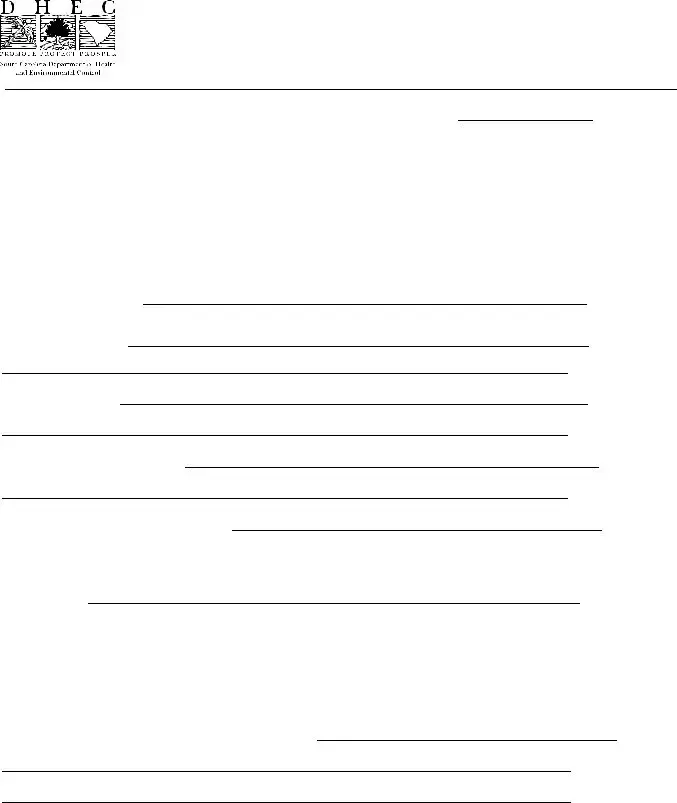The Environmental Protection Agency (EPA) Incident Report Form is quite similar to the DHEC 3685 form in terms of purpose and content. Like the DHEC 3685, it requires detailed information about environmental incidents, including the location, the nature of the incident, the volume of discharge, and the response actions taken. Both forms are integral to the regulatory process, ensuring that appropriate measures are taken to mitigate environmental damage and comply with federal and state regulations.
The Hazardous Waste Manifest is another document that shares similarities with the DHEC 3685 form. Although it focuses specifically on the tracking and handling of hazardous waste, it similarly collects comprehensive details about the waste, such as its quantity, nature, and the actions taken to safely manage it. Both documents serve regulatory purposes, helping to monitor and control potential environmental hazards.
The Water Quality Incident Report Form, used by many state environmental agencies, is also reminiscent of the DHEC 3685 form. It focuses on incidents that could affect the quality of water bodies, requiring information on the incident’s impact, the estimated volume of pollutants released, and the steps taken to address the issue. Both forms are essential for maintaining water quality standards and protecting aquatic environments.
The Facility Response Plan (FRP) is a document that outlines a comprehensive response to oil spills or hazardous substance releases. While not a report form per se, its connection to the DHEC 3685 form lies in the anticipatory detail and response strategies it requires for potential environmental incidents. Both documents ensure preparedness and immediate action in the event of environmental emergencies, thereby minimizing harm.
The Spill Prevention, Control, and Countermeasure (SPCC) Plan is another analogous document. It details preventive measures and response procedures for oil spills, a focus that aligns with the DHEC 3685 form’s goal of prompt reporting and action in sewage spills. Both documents aim to prevent environmental damage through careful planning and immediate response to incidents.
The Stormwater Pollution Prevention Plan (SWPPP) also bears resemblance to the DHEC 3685 form, though it specifically focuses on managing stormwater discharges to prevent pollution of waterways. While the SWPPP is more about prevention and the DHEC 3685 form is about reporting specific incidents, both play crucial roles in protecting water quality.
The Underground Storage Tank (UST) Incident Report Form is used to report leaks or spills from UST systems, making it similar to the DHEC 3685 form. Both forms require detailed incident reporting, including the cause, volume, and response actions to protect the environment from potential contaminants.
The Air Quality Complaint Form, while focusing on air rather than water or waste, parallels the DHEC 3685 form in its function as a tool for reporting and addressing environmental health concerns. By documenting the specifics of air quality incidents, it works alongside forms like the DHEC 3685 to safeguard environmental conditions.
The Pollution Incident Prevention Plan (PIPP) is a proactive document required for certain facilities, detailing measures to prevent pollution incidents. Its connection to the DHEC 3685 form lies in the emphasis on preventing environmental harm, with the DHEC form serving as a means to report and address incidents that still occur despite best efforts.
Finally, the Clean Water Act NPDES Permit Violation Notice requires facilities to report any non-compliance with permit conditions, including unauthorized discharges. This notice, while specifically for permit violations, shares the DHEC 3685 form's objective of ensuring compliance with environmental regulations and protecting water quality from pollution.
